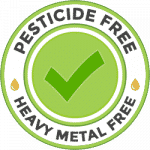I. Introduction
Hemp cultivation has gained significant attention in recent years due to its potential economic and environmental benefits. Hemp, also known as industrial hemp, is a variety of the Cannabis sativa plant that contains less than 0.3% tetrahydrocannabinol (THC), the psychoactive compound found in marijuana. Hemp is a versatile crop that can be used for various purposes, including fiber production, grain production, and extraction of CBD oil.
The objective of this plan is to provide a basic guide for farmers and growers who are interested in cultivating hemp. This plan covers essential aspects of hemp cultivation, including site selection and preparation, seed selection and planting, irrigation and fertilization, weed and pest control, and harvesting and drying. The plan is designed to maximize yield potential while promoting sustainable and environmentally friendly practices.
To consult on a tailormade plan for hemp farming, get in touch
II. Site Selection and Preparation
The success of hemp cultivation depends significantly on choosing a suitable site with well-drained, fertile soil and a pH between 6-7.5. Conducting a soil test is essential to determine the nutrient levels and make necessary amendments, such as adding compost or lime to adjust pH levels. Over-tilling can damage soil structure and reduce yield potential, so it is crucial to till the land to a depth of 6-8 inches. Raised beds can improve drainage and soil structure, and they should be created if necessary.
III. Seed Selection and Planting
Choosing the appropriate hemp variety is critical to achieving the desired end-use and maximizing yield potential. Factors such as climate, soil type, and disease resistance should also be considered when selecting a variety. The three main types of hemp varieties are fiber, grain, and CBD oil.
Fiber hemp varieties are grown for their long, strong fibers which are used in textiles, paper, and building materials. Grain hemp varieties produce seeds that can be used for food, animal feed, and oil production. CBD oil hemp varieties are grown for their high cannabidiol content, which is used in medicinal and wellness products.
When purchasing hemp seeds, it is important to ensure that they are certified and come from a reputable supplier to ensure genetic purity and avoid introducing pests or diseases to the crop.
Planting hemp seeds should be done during late spring or early summer when soil temperatures have reached at least 50°F. Seeds should be planted at a depth of 0.5 to 1 inch and spaced 6 to 10 inches within rows, with rows spaced 6 to 10 feet apart.
Seedlings should emerge within 7 to 10 days of planting, and weed control should be a top priority during the first few weeks of growth. Hemp plants can be sensitive to competition from weeds and may require mechanical cultivation, mulching, or cover cropping to reduce weed pressure.
IV. Irrigation and Fertilization
Consistent water supply throughout the growing season is essential for healthy hemp plant growth and optimal yields. Irrigation systems such as drip irrigation are recommended as they provide efficient water delivery to the plants while minimizing water waste.
Applying the recommended amounts of nitrogen, phosphorus, and potassium based on soil test results and the specific hemp variety is critical for achieving maximum yield potential. Consideration should also be given to using organic fertilizers, such as compost or fish emulsion, to promote soil health and reduce the risk of nutrient leaching.
It is important to note that hemp plants have a high nutrient demand, especially during the vegetative stage, and under-fertilization can lead to stunted growth and reduced yields. However, over-fertilization can also be harmful, as excess nutrients can cause plant stress and increase the risk of pests and diseases.
V. Weed and Pest Control
Weed and pest control are important aspects of hemp cultivation. Sustainable weed control methods, such as mechanical cultivation, mulching, and cover cropping, should be employed to reduce weed competition.
Regular monitoring for pests and diseases is crucial to addressing issues as they arise. Integrated pest management (IPM) practices should be used to minimize the use of chemical pesticides, which can have negative impacts on the environment and human health. Beneficial insects, such as ladybugs and lacewings, can be used to control pest populations naturally, while organic pesticides can be used as a last resort if other methods are ineffective.
VI. Harvesting and Drying
Harvesting hemp plants at the appropriate time based on end-use is critical for maximizing yields and quality. The timing of harvest can vary depending on the variety and intended use, but generally occurs between late August and early October.
Specialized equipment, such as a combine or sickle-bar mower, is used for efficient harvesting. However, hand harvesting may be necessary for certain varieties or small-scale operations.
After harvest, the drying process is critical to preserving the quality of the plant material. Drying should be done slowly and carefully using natural air drying, forced air drying, or specialized drying facilities to prevent damage to the plant and ensure high-quality end products.
VII. Conclusion
Hemp cultivation can be a profitable and sustainable agricultural enterprise when best practices are followed. Proper site selection and preparation, seed selection and planting, irrigation and fertilization,
